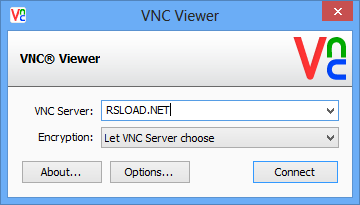

Next, log in using SSH and run vncserver-virtual -kill :desktop_number – in our example this would be: vncserver-virtual -kill :1.
Realvnc enterprise install#
To end the persistent VNC session, first log out of your desktop environment as usual. RealVNCs VNC Server, the software you have to install on the computer that will be controlled, requires a license for use. Connect to desktop 1 instead of desktop 99 (in our example :1) using the RealVNC®Viewer. You can now log off from your SSH session if you so choose. In the above example, it is desktop 1 ( New desktop is :1 (160.36.58.188:1)). VNC Server catchphrase: "Balance center dream. Running applications in /etc/vnc/xstartup

By using this site, you accept the Terms of Use and. On this alternative implementation, please see: The opinions expressed above are the personal opinions of the authors, not of Hewlett Packard Enterprise.
Realvnc enterprise password#
You've set vncserver-virtual to use the system Xorg server. The Licensing Wizard should appear automatically when VNC Server is installed, but if it doesn’t you can right-click the VNC Server tray icon and select Licensing: Enter the email address and password you used when you signed up for your RealVNC account: NOTE: If you have multiple subscriptions, you will be asked to choose which subscription.
Realvnc enterprise windows#
OS: Red Hat Enterprise Linux Server 7.7, Linux 3.10.0, amd64 This documentation is for the Unix programs but is mostly relevant for the equivalent Windows programs as well. Protected by UK patent 2481870 US patent 8760366 EU patent 2652951. Offer secure remote access at scale throughout your organization. United States of America and other jurisdictions. Posted February 19 (edited) VNC Connect Enterprise 7.0.1 with Keygen. Registrations and/or pending trademark applications in the European Union, RealVNC and VNC are trademarks of RealVNC Ltd and are protected by trademark

Once you are logged in, run the vncserver-virtual command manually. To get a persistent VNC connection, first log into the system of your choice (it has to be a system supporting RealVNC®) via SSH – see the Remote Access knowledgebase article for more information on SSH connections. Please remember that these computers are shared resources. NOTE: The EECS IT Staff reserves the right to kill any sessions that are using an undue amount of system resources (CPU time, RAM, etc.) and make it impossible for other users to share the system. You can then later reconnect to the same session, finish your work, log out, and remove your session. It is, however, possible to create a persistent connection that will survive disconnecting. The access method described above makes it easy to connect to a VNC system, do your work, and then disconnect without leaving a lot of processes running.


 0 kommentar(er)
0 kommentar(er)
